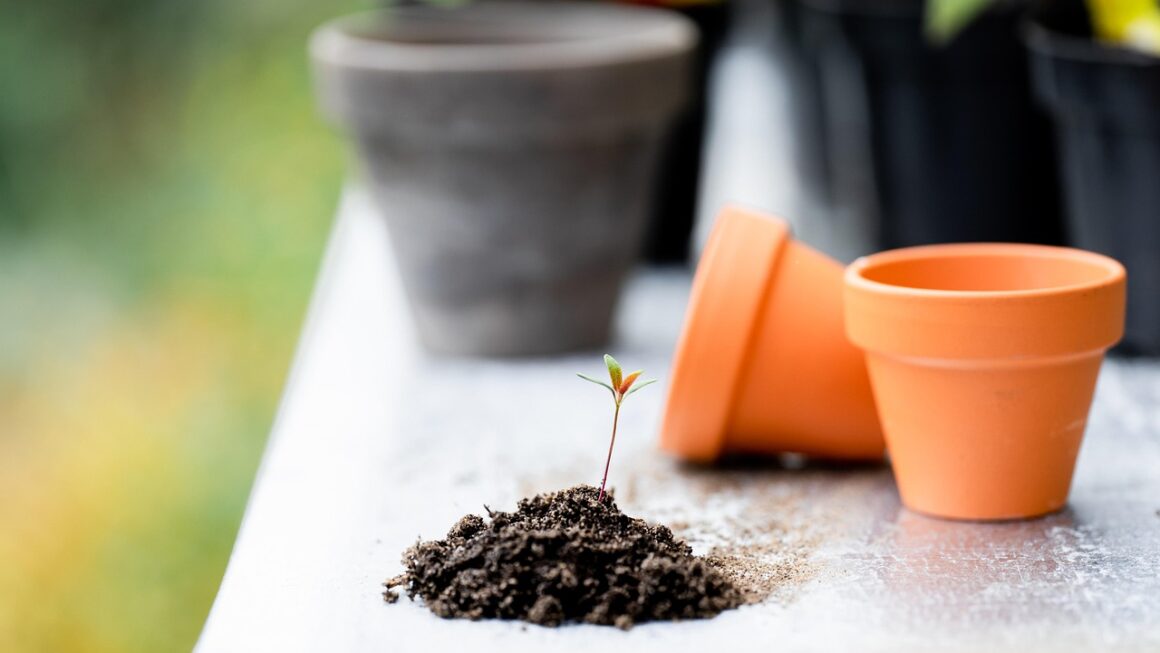Dive into the rewarding world of vegetable gardening and experience the joy of growing your own fresh, flavorful produce right in your backyard! Whether you’re a seasoned gardener or a complete beginner, this guide will provide you with the essential knowledge and practical tips to create a thriving vegetable garden that yields delicious results. From planning and preparation to planting and maintenance, we’ll cover everything you need to know to cultivate a bountiful harvest and enjoy the satisfaction of eating homegrown vegetables.
Planning Your Vegetable Garden
A successful vegetable garden starts with careful planning. Taking the time to assess your space, climate, and personal preferences will set you up for a productive and enjoyable gardening experience.
Assessing Your Space and Sunlight
- Sunlight: Most vegetables require at least 6-8 hours of direct sunlight per day. Observe your yard throughout the day to identify areas that receive ample sunlight.
- Soil: Understanding your soil type is crucial. Perform a soil test to determine its pH level and nutrient content. You can purchase a soil testing kit at most garden centers or send a sample to a local agricultural extension office.
- Space: Consider the available space and choose vegetables that will thrive in that area. Compact varieties are ideal for small gardens or container gardening.
- Water Source: Ensure easy access to a water source. Installing a rain barrel can be an eco-friendly way to collect water for your garden.
Choosing the Right Vegetables
- Climate: Select vegetables that are well-suited to your local climate and growing season. Check your region’s hardiness zone to determine which plants will thrive.
- Personal Preferences: Grow vegetables that you and your family enjoy eating!
- Beginner-Friendly Options: Some easy-to-grow vegetables include lettuce, radishes, beans, zucchini, and tomatoes.
- Succession Planting: Plan for succession planting to extend your harvest. Plant new crops every few weeks to ensure a continuous supply of fresh vegetables. For example, plant a row of lettuce every two weeks for a consistent harvest.
Garden Layout and Design
- Row Planting: Traditional row planting is simple and efficient, especially for larger gardens.
- Raised Beds: Raised beds offer better drainage, soil control, and accessibility. They are also a good option for areas with poor soil quality.
- Square Foot Gardening: This method maximizes space by dividing the garden into square-foot sections and planting different vegetables within each square. A popular approach for smaller gardens.
- Companion Planting: Plant compatible vegetables together to improve growth, deter pests, and enhance flavor. For example, plant basil near tomatoes to repel insects and improve the flavor of the tomatoes.
Preparing the Soil for Planting
Healthy soil is the foundation of a thriving vegetable garden. Taking the time to prepare your soil properly will ensure that your plants have the nutrients and drainage they need to flourish.
Soil Testing and Amendments
- Soil Testing: As mentioned earlier, test your soil to determine its pH and nutrient levels.
- pH Adjustment: Most vegetables prefer a slightly acidic soil pH of around 6.0 to 7.0. Lime can be added to raise the pH, while sulfur can be used to lower it.
- Adding Organic Matter: Incorporate plenty of organic matter, such as compost, aged manure, or leaf mold, to improve soil structure, drainage, and fertility. Aim for a 2-4 inch layer of organic matter.
Tilling and Bed Preparation
- Tilling: Tilling helps to loosen the soil and incorporate amendments. Avoid over-tilling, as it can damage soil structure.
- No-Till Gardening: Consider no-till gardening to preserve soil health and reduce erosion. This method involves adding amendments to the surface of the soil without tilling.
- Raised Bed Construction: If using raised beds, build them from untreated lumber, concrete blocks, or other durable materials. Fill the beds with a mix of topsoil, compost, and other organic matter. A good mix is 60% topsoil, 30% compost and 10% peat moss or coco coir.
Planting Your Vegetables
With your garden planned and soil prepared, it’s time to start planting! Follow these guidelines for successful vegetable planting.
Starting Seeds Indoors
- Seed Starting Mix: Use a seed starting mix that is lightweight and sterile.
- Timing: Start seeds indoors 6-8 weeks before the last expected frost date.
- Lighting: Provide adequate lighting with grow lights or a sunny windowsill.
- Hardening Off: Gradually acclimate seedlings to outdoor conditions before transplanting them to the garden. This process, called “hardening off”, should take about a week. Start by placing the seedlings outside for a few hours each day, gradually increasing the time they spend outdoors.
Direct Sowing
- Timing: Direct sow seeds after the last frost date, when the soil has warmed up.
- Planting Depth: Follow the seed packet instructions for planting depth and spacing.
- Watering: Keep the soil consistently moist until seeds germinate.
Transplanting Seedlings
- Timing: Transplant seedlings on a cloudy day or in the late afternoon to minimize stress.
- Spacing: Follow spacing recommendations for each vegetable to allow for adequate growth.
- Watering: Water seedlings thoroughly after transplanting.
- Mulching: Mulch around the seedlings to retain moisture, suppress weeds, and regulate soil temperature.
Maintaining Your Vegetable Garden
Regular maintenance is essential for a healthy and productive vegetable garden.
Watering and Fertilizing
- Watering: Water deeply and infrequently, aiming for about 1 inch of water per week. Avoid overwatering, which can lead to root rot. Use a soaker hose or drip irrigation to deliver water directly to the roots.
- Fertilizing: Fertilize vegetables regularly with a balanced organic fertilizer. Follow the instructions on the fertilizer package. You can also use compost tea as a natural fertilizer.
- Side-Dressing: Side-dress vegetables with fertilizer when they start to produce flowers or fruits.
- Avoid over-fertilizing Too much nitrogen can result in excessive foliage and fewer fruits.
Weed and Pest Control
- Weeding: Regularly remove weeds by hand or with a hoe. Mulching can help to suppress weed growth.
- Pest Control: Use organic pest control methods, such as insecticidal soap, neem oil, or diatomaceous earth.
- Beneficial Insects: Encourage beneficial insects, such as ladybugs and lacewings, to control pests naturally. Plant flowers that attract these beneficial insects, such as marigolds and sunflowers.
- Crop Rotation: Rotate crops each year to prevent the buildup of pests and diseases in the soil.
Pruning and Support
- Pruning: Prune tomatoes, peppers, and other vining vegetables to improve air circulation and fruit production. Remove suckers from tomato plants to encourage more fruit development.
- Support: Provide support for climbing vegetables, such as tomatoes, cucumbers, and beans, using stakes, trellises, or cages.
Harvesting and Enjoying Your Produce
The most rewarding part of vegetable gardening is harvesting and enjoying the fruits (and vegetables!) of your labor.
Knowing When to Harvest
- Maturity: Harvest vegetables when they are at their peak of maturity. Check seed packets or online resources for specific harvesting information for each vegetable.
- Taste: Sample vegetables to determine when they are at their best flavor.
- Regular Harvesting: Harvest vegetables regularly to encourage continued production.
Harvesting Techniques
- Gentle Handling: Handle vegetables gently to avoid bruising or damaging them.
- Proper Tools: Use appropriate tools, such as pruning shears or a digging fork, for harvesting.
- Storage: Store vegetables properly to extend their shelf life.
Enjoying Your Harvest
- Fresh Eating: Enjoy your fresh vegetables in salads, side dishes, and main courses.
- Preserving: Preserve your harvest by canning, freezing, or drying.
- Sharing: Share your bounty with friends, neighbors, and family.
- Consider creating a vegetable garden journal To document your successes and failures, and use it as reference for future gardening.
Conclusion
Growing your own vegetables is a rewarding and fulfilling experience that provides fresh, healthy food for you and your family. By following these guidelines and tips, you can create a thriving vegetable garden that brings you joy and satisfaction for years to come. Remember to start small, be patient, and enjoy the process. Happy gardening!




